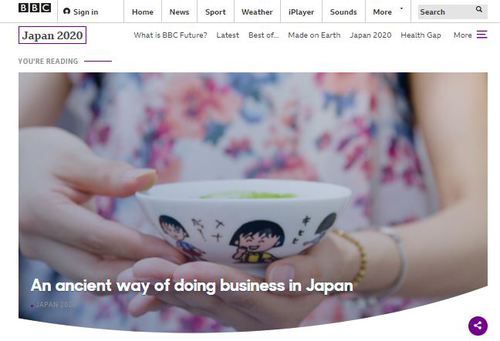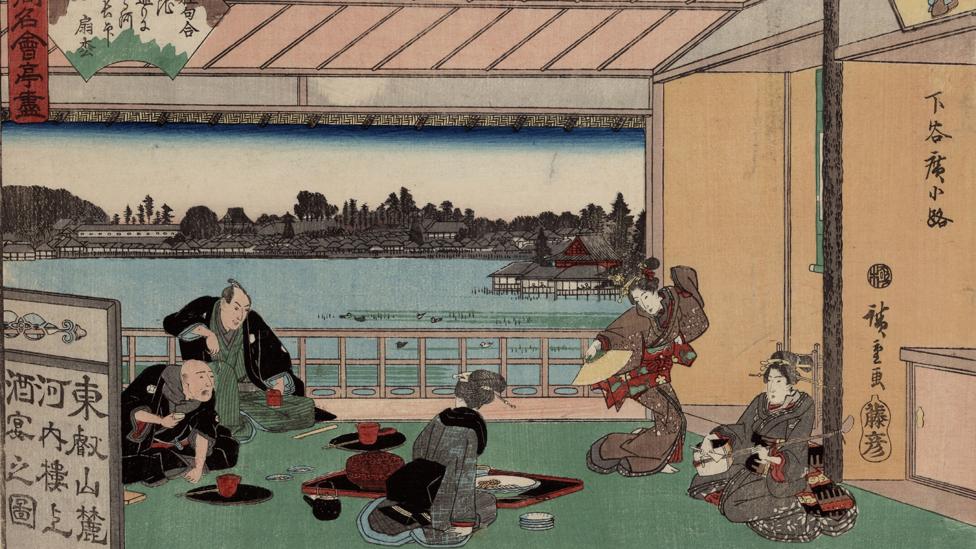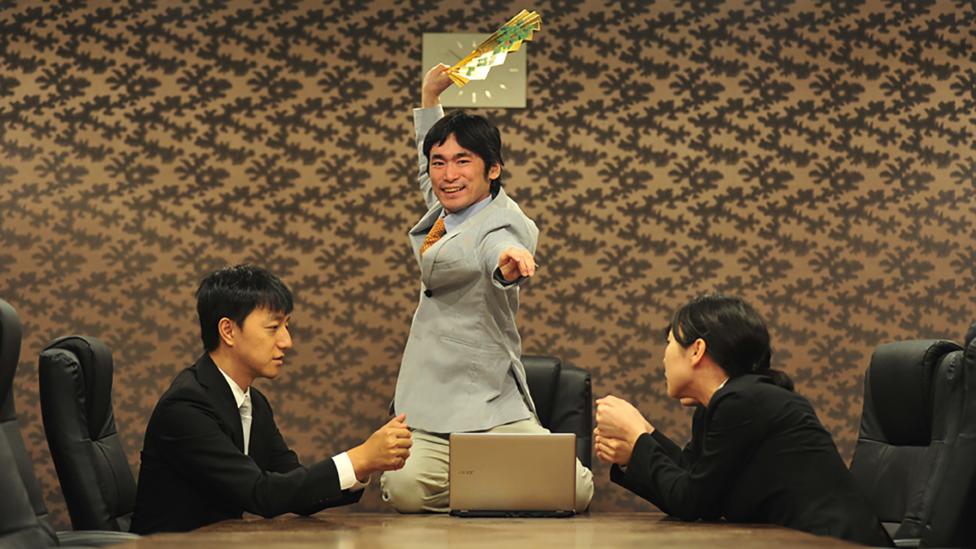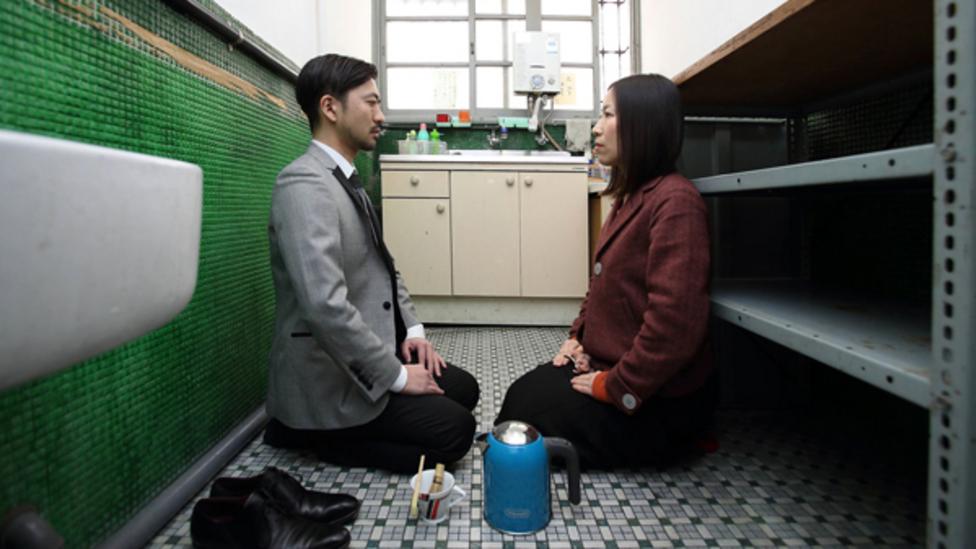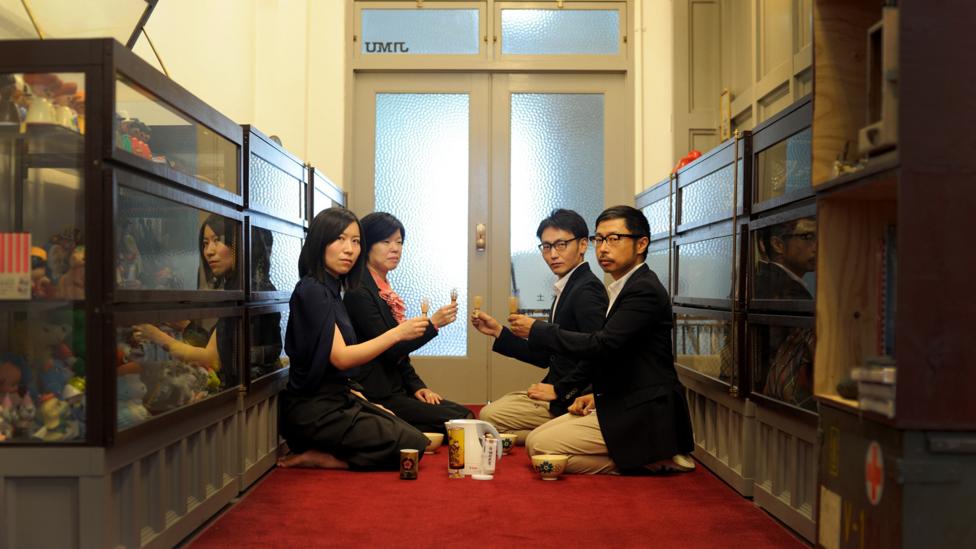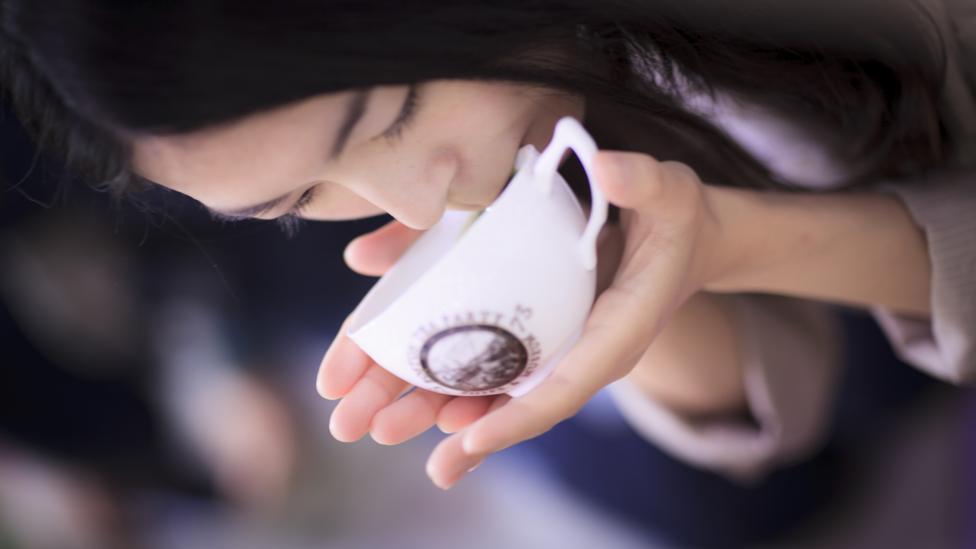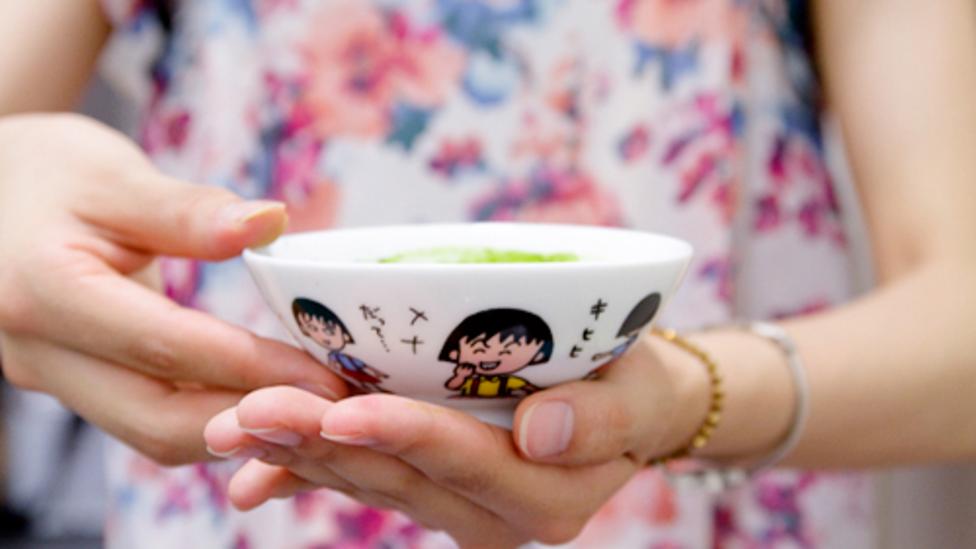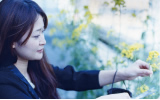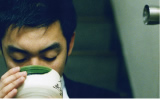news
We, Kyūtō-Ryū, appeared on the BBC website!
W
When we think of a Japanese tea ceremony (sadō), it invokes thoughts of a refined woman in a kimono, sitting on a tatami mat making matcha, carefully following detailed instructions of old. According to a 2016 census taken by the Statistics Bureau of Japan, 80% of tea ceremony participants are women. However, this idea of the tea ceremony being attributed to females is actually a recent development. Eight hundred years ago, when the matcha drinking culture was first imported via China, tea ceremonies were conducted by warriors and monks: in short, men.
You might also like these stories from Japan 2020:
Inside Japan's astounding bento boxes
The hunt for Japan's 'ghost' wolves
A car-crash crisis in ageing Japan?
Etsuko Kato, a cultural anthropologist who has written on the topic, explains how women came to perceive the tea ceremony as a skill that elevated their own social status.
Students train endlessly to obtain perfection in otemae, the process of making tea and conducting the tea ceremony
Kato explains that after the Meiji Restoration in 1868, educated women turned to "the way of tea" in the hope of improving their femininity and refinement before marriage. Students train endlessly to obtain perfection in otemae: the process of making tea and conducting the tea ceremony. When guests are invited to a tea ceremony, the host's expertise in the art is on display. At a time when women's responsibilities were strictly limited to household affairs, conducting an elegant tea ceremony was an important way for cultured women to be socially acknowledged.
A ukiyo e print of a tea house ceremony (credit: Japan Art Collection (JAC)/Alamy Stock Photo)
As women's social standing in the workspace progressed, there has been a marked decline in tea ceremony participation. According to the same census, the majority of women learning now are 50 years old and older. A cultural tradition without a young generation to pass it onto is yet another troubling omen of the ageing demographic in Japan.
But there has been a recent revival of this ancient art. A new wave, updated to reflect modern society, has quietly been established in the last ten years.
Sword-wielding warriors and the modern-day businesspeople
Kyūtō-Ryū is a new type of tea ceremony established in 2010. Kyūtō can refer to either a kitchenette or a hot water pot and reflects their chosen venue - the office canteen. Its concept is simply "the way of tea for the busy office worker." Heading the movement is Hankyu Tanida, who has been working in an office for over 20 years. Her first encounter with the tea ceremony was through the comic book series "Hyougemono" (a silly person, or, an object with an interesting shape) by Yoshihiro Yamada. Set during the war-torn Sengoku era, this acclaimed manga comic depicts warriors who are passionate about the "ways of tea".
"Businesspeople are like the samurai of today, fighting against the stresses of work" (credit: Makoto Motomiya)
"Before I read the manga, I always thought of [the] tea ceremony to be a boring event in which fancy ladies drank tea," Tanida reflects. "But even during the harrowing period of samurai warfare, where one could face death on any day, the warriors aimed to relieve stress and regain mental strength by committing to tea ceremony. In their way of life, I saw the businessperson of today, fighting against the stresses of work."
I always thought of [the] tea ceremony to be a boring event in which fancy ladies drank tea
As he began to study tea ceremonies, Tanida decided to visit the famous tea room "Taian" in Kyoto, thought to be the creation of the acclaimed historical figure and tea master, Sen no Rikyū, who had a profound influence on the Japanese "way of tea" during the Azuchi-Momoyama Period.
"I had heard it was a small, two-tatami mat room," Tanida recalls. "Yet somehow, it extended beyond its physical boundaries and into space. Naturally, I had high expectations. But when I actually saw it, I thought it small. Much too small. It was the same size as our office kitchenette. When I imagined myself making matcha in our kitchenette, it seemed so silly that I couldn't stop laughing."
Kyūtō-Ryū tea gathering held in the office kitchen (credit: Hiroyuki Fukura)
What Tanida thought was that "the way of tea should be free." Tea rooms are required to be four tatami mats in size (about 6sqm); however, the warriors of the period were happy to be crammed into a space half that size. "That is when I realised that [the] tea ceremony isn't solely about strict adherence to the rules. That its charm manifests when you break some of them." When she went back to work, Tanida invited two of her colleagues to participate in a tea ceremony held in the office break room. It was the same kitchenette where she would make tea for her boss or heat up her bentō box for lunch in the microwave. Yet once sitting Japanese-style on the floor, the room seemed transformed, and it transported the host and his guests to another world. That was the beginning of the Kyūtō-Ryū tea ceremony.
A new-wave of office gatherings
The Kyūtō-Ryū, kitchenette-style tea ceremony, is conducted during lunch breaks, and Tanida believes there are three major benefits to his new-wave of tea ceremony.
Firstly, in two grams of powder for a so-called "light tea" matcha there is about 64mg of caffeine, which is comparable to a cup of coffee (10g of beans includes about 60mg of caffeine). Its stimulating effect is often used to help stave off the office afternoon lull. "The warriors would drink maccha before battle to psych themselves up," Tanida explains.
Another reason is its social aspect. During a tea ceremony, participants intermingle regardless of job title. One of the rules in Kyūtō-Ryū is to take off any office ID cards from around the neck and set them aside before gathering. According to Tanida, this reflects the custom of the historical ceremonies, in which the samurai lay aside their swords - a symbol of their identity, before partaking in tea. "Through these tea gatherings," Tanida says, "the samurai warriors would openly discuss weaponry and strategy, regardless of class and title. Many used these ceremonies as networking opportunities to further their careers."
A tea gathering held in an antique shop in Osaka (credit: Kiyoe Akechi)
And lastly, at their own Kyūtō-Ryū gatherings, the participants use unusual tools that are perhaps not the "right" ones, according to tradition. Instead, they use anything that is around them to create an ambience, unique to their office.
In a cracked and stained coffee cup, I see the efforts of my colleagues
Traditionally, the tea-bowl into which the matcha is poured is a tool that draws much attention. Oftentimes the host would bring out bowls priced at hundreds of thousands yen (above £1,000). But at the Kyūtō-Ryū gatherings, participants use old coffee cups with their own charm. The expense report receipts pinned to the refrigerator serves as the kakejiku, a scroll that expresses the sentiment of that day's ceremony.
Korean tea bowls were widely used in Japan during the Korean Joseon Dynasty. In the same spirit, a coffee cup is used in tea ceremonies today (credit: Junichi Kondo)
Tanida says, "through Rikyū's philosophy of Wabi Tea, we seek the beauty in the used and simple, rather than the gorgeous. What is important is to express what the tool we use for tea stands for in its heart. In a cracked and stained coffee cup, I see the efforts of my colleagues. Once you share that story with your guests, you become one with them through the story."
A light-hearted game
At the beginning, only three participants practised Kyūtō-Ryū tea ceremonies. And now through mutual friends and interest, this new style of tea ceremony has spread to other office kitchenettes. In the past there were tea parties conducted thousands of miles away in New York and London. Today, the group uses abandoned stations in the countryside, or dilapidated clubs near old onsen (hot springs) towns to meet for their tea ceremonies. Roughly 120 tea ceremonies have been held, with over 2400 participants.
The way of tea has changed drastically in the past few decades
Professor Hiroshi Yamaguchi, the head of global media studies at Komazawa University in Tokyo, believes that "by ignoring the traditional ways, Kyūtō-Ryū has succeeded in turning the essence of the tea gathering into a fun parody, something light-hearted like a game." Yamaguchi himself participated as a guest in 2013, and has since become a managing member of the group.
A participant holds a cup she has used since childhood. The retro anime on it gives a feeling of nostalgia (credit: Sakiko Kishimoto)
"The environment surrounding the way of tea has changed drastically in the past few decades," Yamaguchi explains. "After the post-war bubble of Japan, the 'suppliers' of tea, its teachers, and cup-makers had the upper hand, as there was demand for expensive lessons and tea bowls. However, as the perceived value of tea tools declines, the power dynamic shifts from supplier to consumer, i.e: the participants. The way of tea must evolve such that the participants enjoy the ceremony, otherwise there will be less and less demand for the tradition."
At Kyūtō-Ryū gatherings, novices and traditionalists mingle together as guests, and share their own ways of enjoying tea.
"Through our tea parties, I hope that more and more people become interested in the way of tea. In Japan, matcha is considered an exquisite tea. I hope one day it [will] become another option to coffee in the workplace," says Tanida.
« Kyūtō Ryū tea ceremony "the new way of Japanese tea ceremony for the office worker" (スキーム)
» BBCネットニュースに掲載されました (news)
